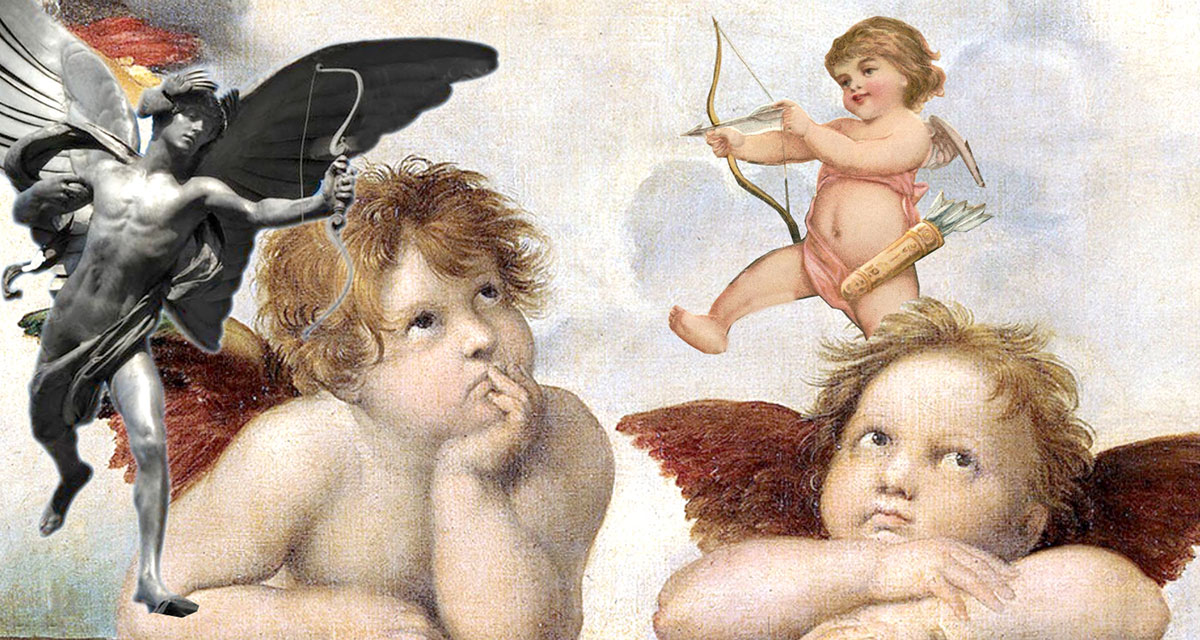
Valentine’s Day is synonymous with flowers and chocolates, with singles at every corner awaiting Cupid to strike with his golden arrow of love.
The traditional image of Cupid is a cherub infant carrying a bow and two arrows, one of gold and one of lead. Anyone struck by the golden arrow immediately falls in love. However, anyone struck by the arrow made of lead falls out of love. But that is simply the modern version of Cupid.
The concept of Cupid derives from around 700 B.C. According to Greek mythology, Eros, the god of love and desire, is a handsome young man adorned with wings and a bow and arrow born to Aphrodite, the goddess of love, and Ares, the god of war.
Eros was known to cause mischief and use his arrows to manipulate gods and humans into unwillingly falling in love for his own entertainment, which often led to chaos.
As time progressed, the image of Eros as the attractive god of love, desire and fertility was replaced by the Romans with a little cherub boy who makes people fall in love at the request of his mother, Venus.
Cupid is depicted as being more playful than Eros, who is more mature. Cupid represents love, desire and attraction rather than Eros’ representation of fertility and sexuality.
The word erotic, which Merriam-Webster defines as “devoted to, or tending to arouse sexual love or desire,” comes from the Greek god’s name. One does not equate cute Cupid with carnality, at least not anymore.
As Christianity engulfed Europe in the Middle Ages, Cupid’s concept underwent various artistic interpretations, and his once angelic features took a demonic turn as the once angel of love became the demon of fornication, corrupting the minds of the faithful with lusty, carnal desires.
This sinful depiction of Cupid is attributed to the Middle Ages artist Theodulf of Orleans. The Universal Life Church Monastery website states that Theodulf believed Cupid to be a wicked demon “who wields ‘the devil’s force,’” and “Cupid’s quiver was a symbol of his ‘depraved mind,’” his bow a symbol of “trickery,’ and his arrows a symbol of the ‘poison’ of lust.”
While trust in the god of love was lost during the medieval period, Renaissance artists who were infatuated with mythology restored Cupid to his cherubic roots.
Two centuries later, Cupid struck the hearts of people in the 1800s and became the symbol of Valentine’s Day, a holiday that began in the sixth century B.C. but became popular in the Victorian Era. He was pictured in various Victorian art pieces, Valentine’s cards and cameos.
However, unlike his naked appearance in the past, Eliza Thompson in Shutterstock writes, “If Cupid wanted to fly around shooting love-tipped arrows at innocent bystanders, then he’d have to do it clothed.” This led Victorian artists to cover Cupid with fabric over his private parts or dress him in a toga.
By the 19th century, Renaissance Cupid struck gold in the greeting card business. Rachel E. Greenspan in Time Magazine writes, “The industry really hit its stride in the 1850s after Congress voted to decrease postage in an effort to circumvent the privatization of the post office. This postal reform made it possible for everyday Americans to send and receive mail — while the Industrial Revolution brought the advent of printing press technology.
“So, when Hallmark began manufacturing Valentine’s Day cards in 1916, this mass production meant sending postcards was much cheaper and easier. As Valentine’s Day became more convenient, Cupid imagery only continued to grow,” she writes.
Having a nearly naked winged baby as the face of Valentine’s Day may be an unlikely turn of events, but if one knows how his Greek and Roman roots intertwine, one can see how this once deity became an adorable cherubic angel of love.
Although love may be in the air, so is Cupid. Look out for an arrow from above from the Roman god of love.
